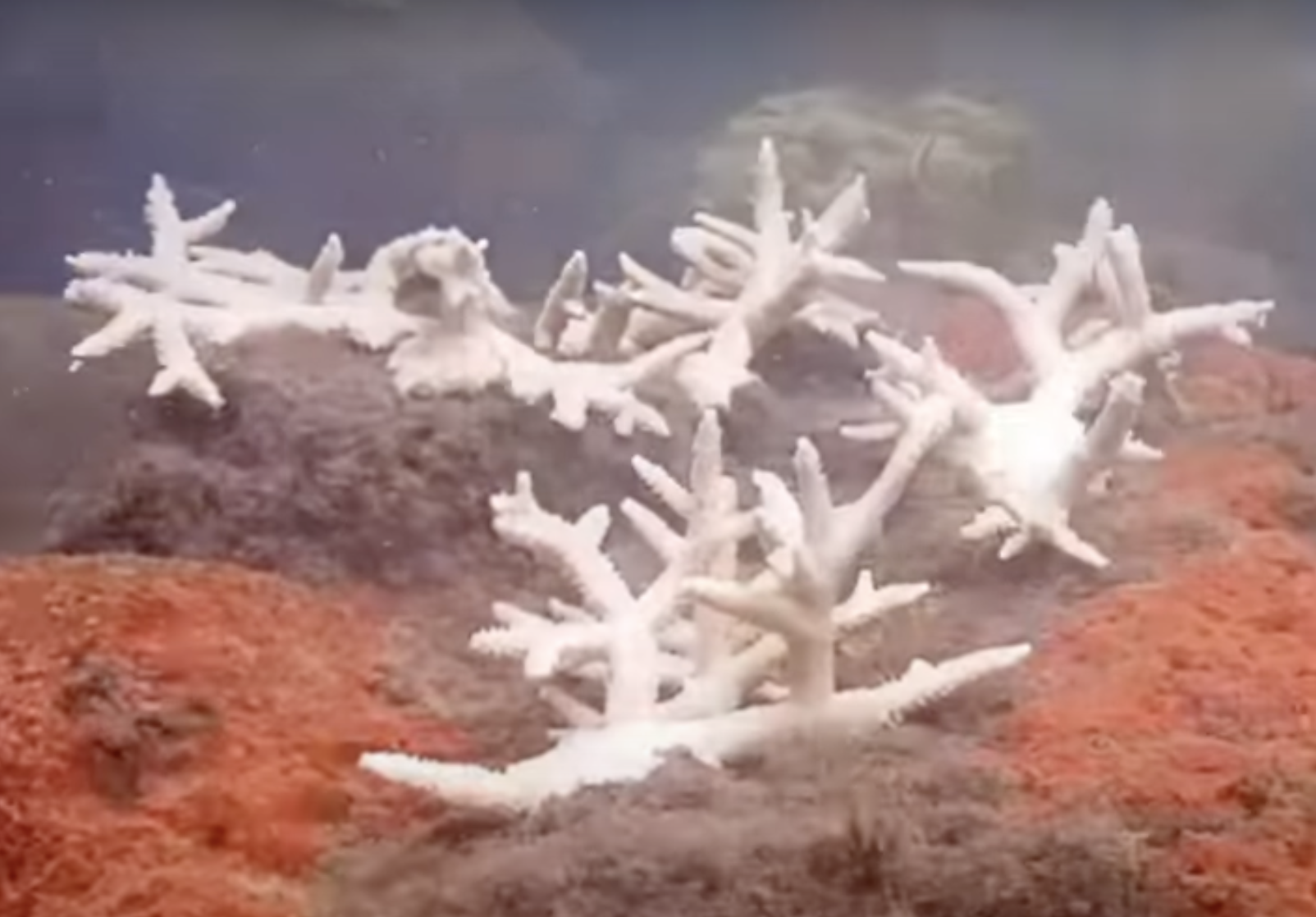Everyone’s favorite underwater camera now has the dubious honor of creating the world’s most comprehensive in-situ coral bleaching timelapse video. Underwater content creator Coral Morphologic says that the summer of 2023 will go down as the hottest in recorded history so far and that when water temperatures in Miami hit the critical bleaching threshold of 87 degrees Fahrenheit (30.5C) the transplanted Acropora cervicornis and pelmata they were filming bleached, died, and eroded for all to see.
The timelapse began in May 2023 and started well by filming the rapid, healthy growth of several endangered Staghorn corals. By mid-July bleaching started, algae grew over the dead skeletons by August, and by September, helped by the actions of the resident parrotfish, the staghorn corals had eroded and disappeared.
“Fast-growing corals like the endangered staghorn (Acropora cervicornis) and elkhorn (Acropora palmata) lack the energy stores that fleshier corals like brain corals have, and die from bleaching stress much more easily.” Coral Morphologic said on their YouTube channel.
“By the end of August 2023, all of the staghorn and elkhorn corals experimentally transplanted by the University of Miami’s Rescue a Reef program succumbed to the excess heat and bleaching. These were corals that are native to cooler, cleaner waters offshore Miami, so it didn’t come as a complete surprise that they could not survive the urban reef environment around the CCC.
“However, a single strain of staghorn and elkhorn coral that are native to the Port did not bleach and continued growing happily despite water temps exceeding 90 degrees Fahrenheit (+32C). Not taking any chances, we brought fragments of these urban strains of stag and elkhorn coral into climate-controlled conditions at NOAA’s Atlantic Oceanographic Marine Lab in July. Once water temperatures cooled enough, these fragments were safely returned to the CURES (Coral Urban Research Experimental Site) nursery frame that sits about 20’ from the CCC.”
“Many corals like the Mustard Hill coral (Porites asteroides,) did not fully recover from bleaching until December 2023. Most of the brain corals had recovered from bleaching by November 2023. Amazingly, a significant number of corals native to PortMiami did not bleach, suggesting that they have a combination of genes and microbiomes that have enabled them to adapt to the Anthropogenic conditions along Miami’s urban coastline.”
“The native urban corals that did bleach managed to survive for several months without any zooxanthellae to provide them with energy, before recovering new zooxanthellae in autumn when cooler water returned. It is possible that the higher levels of nutrients and plankton in the water helped provide these corals with additional energy captured as food.”
The video condenses down nearly five months of growth, bleaching, death, and erosion into just five short seconds, and we admit to having to hit replay several times just to take it all in. Coral Morphologic says that, to their knowledge, the footage is the most complete and longest-running coral time-lapse made underwater in a coral reef environment.
See more on their YouTube channel.



